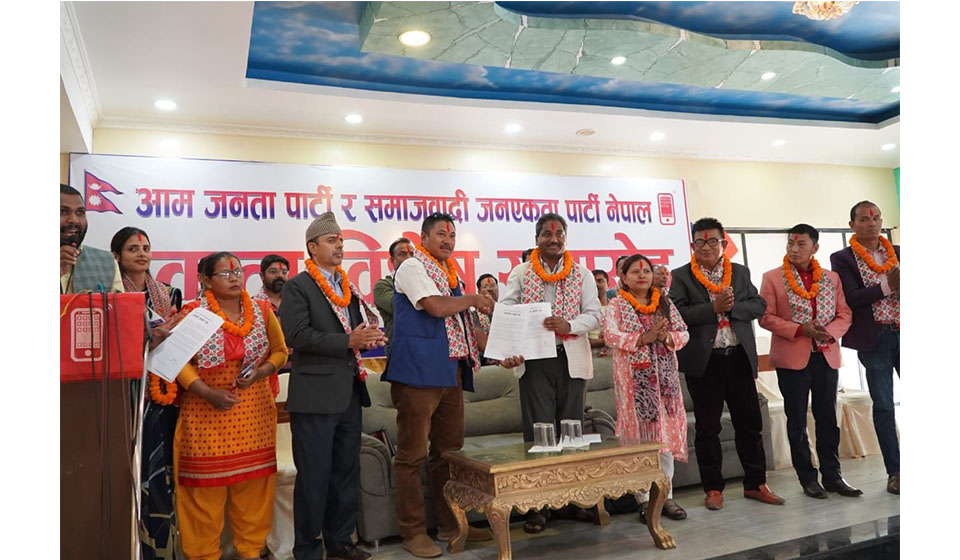
OR
Opinion


Suraj Ghimire
The author is a lecturer of Economics at Rupandehi Campus, Bhairahawa.ecosuraj@gmail.com
It is unwise to assume that the Nepali economy is improving.
Nepal is currently facing various macroeconomic problems such as low economic growth, truncated capital expenditure, high trade deficit, dwindling revenue, rising public debt, and falling demand. Likewise, industrial businesses have not been able to operate at full capacity, with some industries even reaching the point of closure. Students who have completed their school level education are migrating to foreign countries such as Europe, Australia, and the USA for further studies. Every day, there is a queue of over 2000 youths at the airport in Kathmandu seeking foreign employment. The arable land is becoming barren, and desertification is rapidly occurring. Political corruption has permeated every nook and corner. The picture of the Nepali economy is becoming increasingly miserable day by day.
If we examine the statistics up to mid-may, 2023, the deposits in the financial sector have reached 4 trillion 840 billion 440 million rupees. Similarly, the total loan disbursement amounts to 4 trillion 298 billion and 610 million rupees. According to the Nepal Bankers Association, the CD ratio of commercial banks has been limited to an average of 84.88 percent by mid-May. Previously, this ratio was above 90 percent. This indicates that banks' ability to provide loans is increasing these days. However, the demand for loans has not improved at a reasonable rate. Due to the shortage of demand, investments do not seem to yield proper returns. Additionally, the bank interest rates are high, resulting in higher production costs.
Even if the interest rate is reduced at present, the increase in deposits has not come to a standstill. Therefore, the loan interest rate should be further reduced by lowering the deposit interest rate. This can be achieved by creating an investment-friendly environment. It will encourage private investment and lead to an increase in bank loans. Thus, banks must focus on the productive sectors. This can increase sustainable profits for both the banks and the country's production and employment. Moreover, it can strengthen the foundation of public revenue.
Although the government has set a target of 8 percent economic growth in the budget, the National Statistics Office has projected that only 2.16 percent can be achieved in 2079-80. This is due to low private investment, liquidity contraction, and a decline in government capital expenditure. Since economic growth is the primary objective of a developing nation, an investment-friendly environment should be created. Stable government, low interest rates, easy access to finance, infrastructure development, and assurance of returns are necessary conditions for an investment-friendly environment.
Despite poverty alleviation being a priority in various development plans in Nepal over the past two decades, the 15th Plan indicates that the population below the poverty line is 18.7 percent, and multidimensional poverty is 28.6 percent. However, due to the impact of Covid-19, it can be assumed that these rates have increased even further. Employment programs need to be implemented to reduce poverty, which requires an increase in capital and private investment. Furthermore, promoting self-sufficiency among the people through education and skill-based training is crucial.
According to the Customs Department, the foreign trade deficit has reached 1 trillion 204 billion and 422 million rupees by the end of the current financial year. Meanwhile, according to the Comptroller General's Office, the government's expenditure has exceeded its income by 250 billion during this period. Correspondingly, the government expenditure amounts to 1 trillion 470 billion rupees, while revenue collection with grant receipts stands at Rs 797 billion. Consequently, it appears that the government is running out of resources, and the fear of further contraction of the economy is increasing.
In the first 11 months of the current fiscal year, capital expenditure was only 40 percent. Thus, the situation regarding capital expenditure is unsatisfactory. Similarly, in 2016/17, the country's public debt was 25 percent of the GDP, but by 2019/20, it had reached 42.2 percent of the GDP. Looking at the example of Sri Lanka, which fell into the trap of public debt by investing foreign loans in areas with long-term returns and using them to cover current expenses, its public debt reached 122 percent of the GDP. Therefore, Nepal needs to learn a necessary lesson from this.
The problem of declining revenue collection, low capital expenditure, high current expenditure, and increasing public debt has directly impacted Nepal's public finance management. None of the public finance indicators seem to inspire hope in the economy. On the one hand, the pressure on resources in the budget is increasing, and on the other hand, high current expenditure and low capital expenditure reflect poor management in resource mobilization. These issues need to be addressed promptly.
According to the statistics from NRB until Chaitra, the inflation rate has reached 7.76 percent, compared to 7.28 percent during the same period last year. However, despite the statistical data, the situation appears different in the daily lives of common people. It is estimated that the real inflation rate is in double digits due to the increase in the prices of food, dairy products, household consumables, and imported goods. The consistently rising market prices clearly indicate a high inflation rate. Additionally, the inflow of remittances has increased by 24.2 percent in Nepali rupees and 13.9 percent in US dollars during the nine months of the financial year 2079-80. Furthermore, the number of foreign tourists visiting Nepal has increased, and income from the tourism sector has risen by 94.3 percent. The government argues that the economy is improving due to the increasing remittances and tourist inflow. However, there are issues such as low production, low investment, increasing trade deficit, high interest rates, liquidity problems, and extreme unemployment in the country. Therefore, these two indicators of remittances and tourism alone cannot accurately reflect the state of the economy.
Based on the import records for the first nine months of the current financial year, the foreign exchange reserves are equal to 11 months of goods imports and 9.4 months of goods and services imports. However, the current account towards the external sector remains in deficit. If there is an increase in investment, the current account will face more pressure, and the possibility of an increase in interest rates cannot be ruled out. Therefore, it is unwise to assume that the economy is improving. It is necessary to focus on public finance management to maintain the improvement in interest rates by managing the liquidity position.
To improve the economy, it is necessary to be liberal in increasing capital expenditure. Additionally, a strict policy of reducing the current expenditure should be adopted. However, scattering the budget and increasing expenditure in non-productive areas will not strengthen the country's economy. The potential areas of the Nepali economy are agriculture, tourism, and energy. To increase investment in these sectors, it is strategically necessary to attract foreign direct investment while also encouraging private and non-residential Nepali investment. The government should gradually simplify policies and procedures to achieve this. Emphasizing the protection and promotion of entrepreneurship, while developing infrastructure to increase the production capacity of capital, is important. Relying solely on remittances will not sustain the Nepali economy for a long time unless timely action is taken for participatory and sustainable development.
You May Like This

Nepal's trade deficit with Bhutan hits over Rs 126 billion in five years
JHAPA, May 20: Nepal’s trade deficit with Bhutan is over Rs 126 billion in the past five years. Exports and... Read More...

Nepal’s trade deficit declines nearly 11 percent to Rs 475.44 billion
KATHMANDU, Dec 24: Nepal’s trade deficit in the first five months of the current fiscal year declined by 10.91 percent... Read More...

Govt should prioritize Miss Nepal: Miss Nepal Shrinkhala Khatiwada
MAKWANPUR, April 24: Newly crowned Miss Nepal World 2018, Shrinkhala Khatiwada has urged the government to prioritize the pageant as... Read More...


Just In
- Sunkoshi-Marin Diversion Project’s tunnel construction nears completion, breakthrough scheduled for May 8
- Govt tightens security arrangement for Third Investment Summit 2024
- Pesticide residue found in vegetables in Nepalgunj
- Aam Janata Party and Samajwadi Jana Ekata Party merge
- 1,600 participants confirmed for Nepal Investment Summit
- Ilam-2 by-elections held peacefully, vote count likely to start tonight
- NEA schedules five-day power cut across Kathmandu Valley for underground cable installation
- Hundreds of passengers including foreign tourists in distress as poor visibility halts flights to and from PRIA







-1200x560-wm_20240427144118.jpg)






Leave A Comment